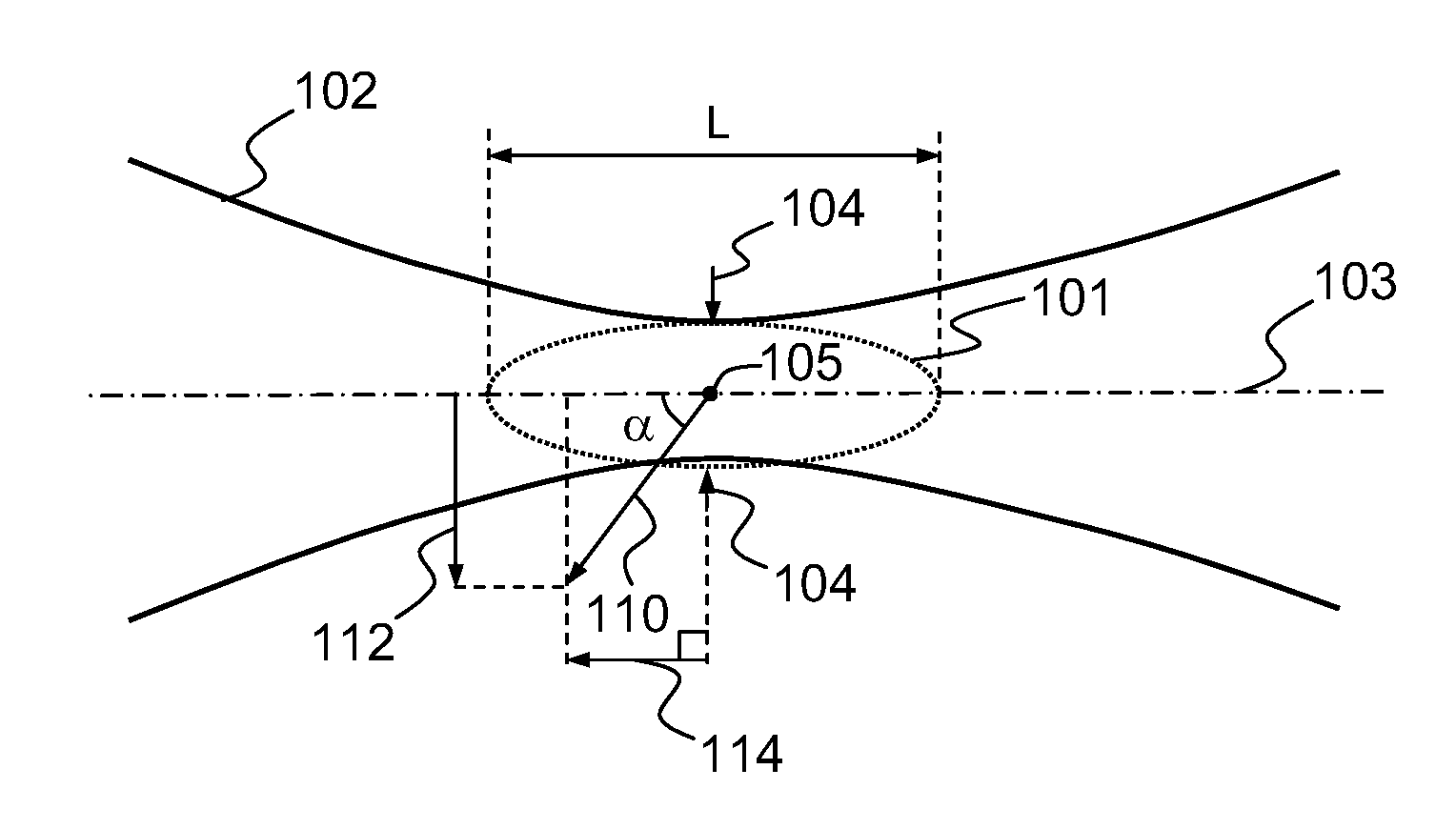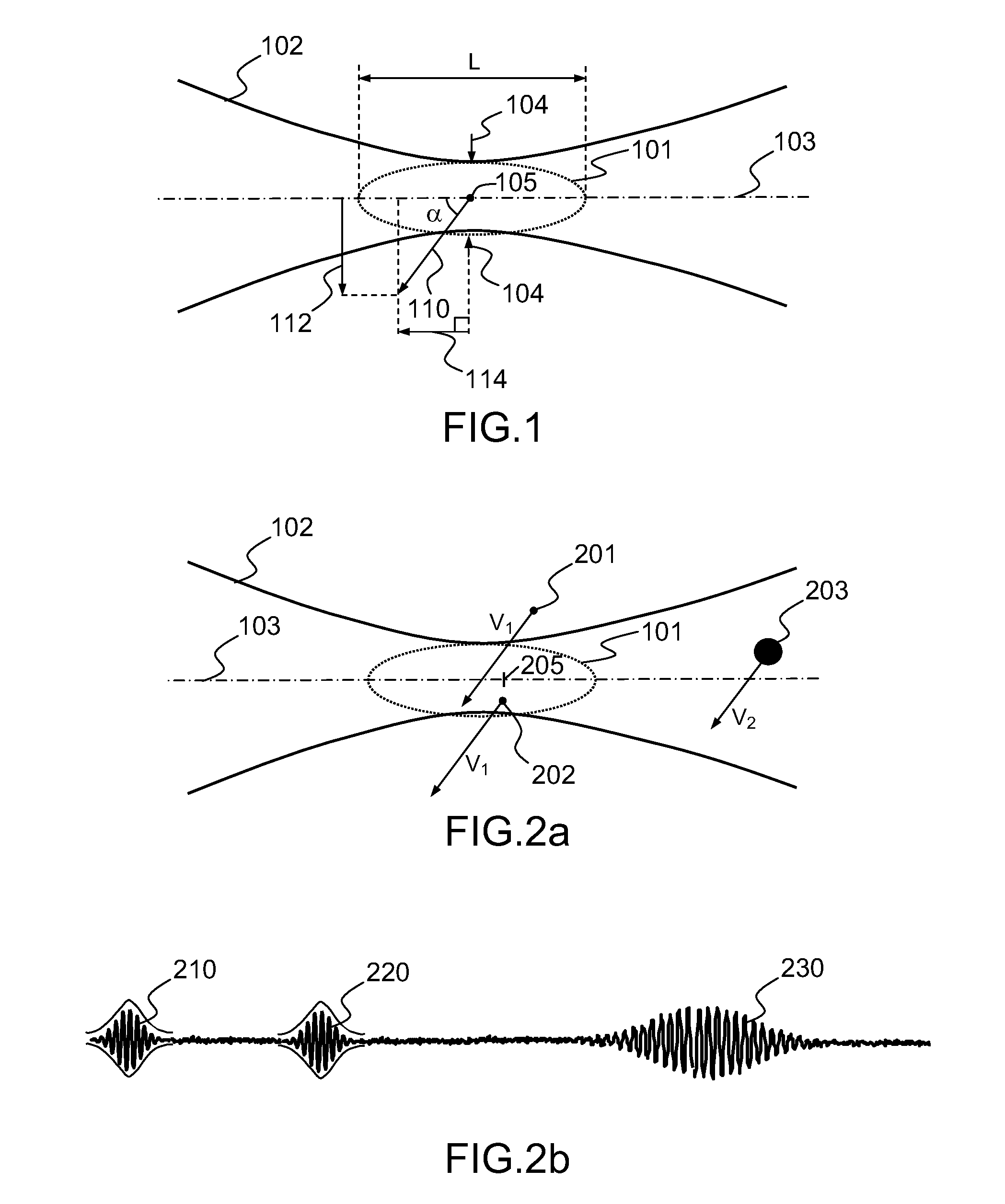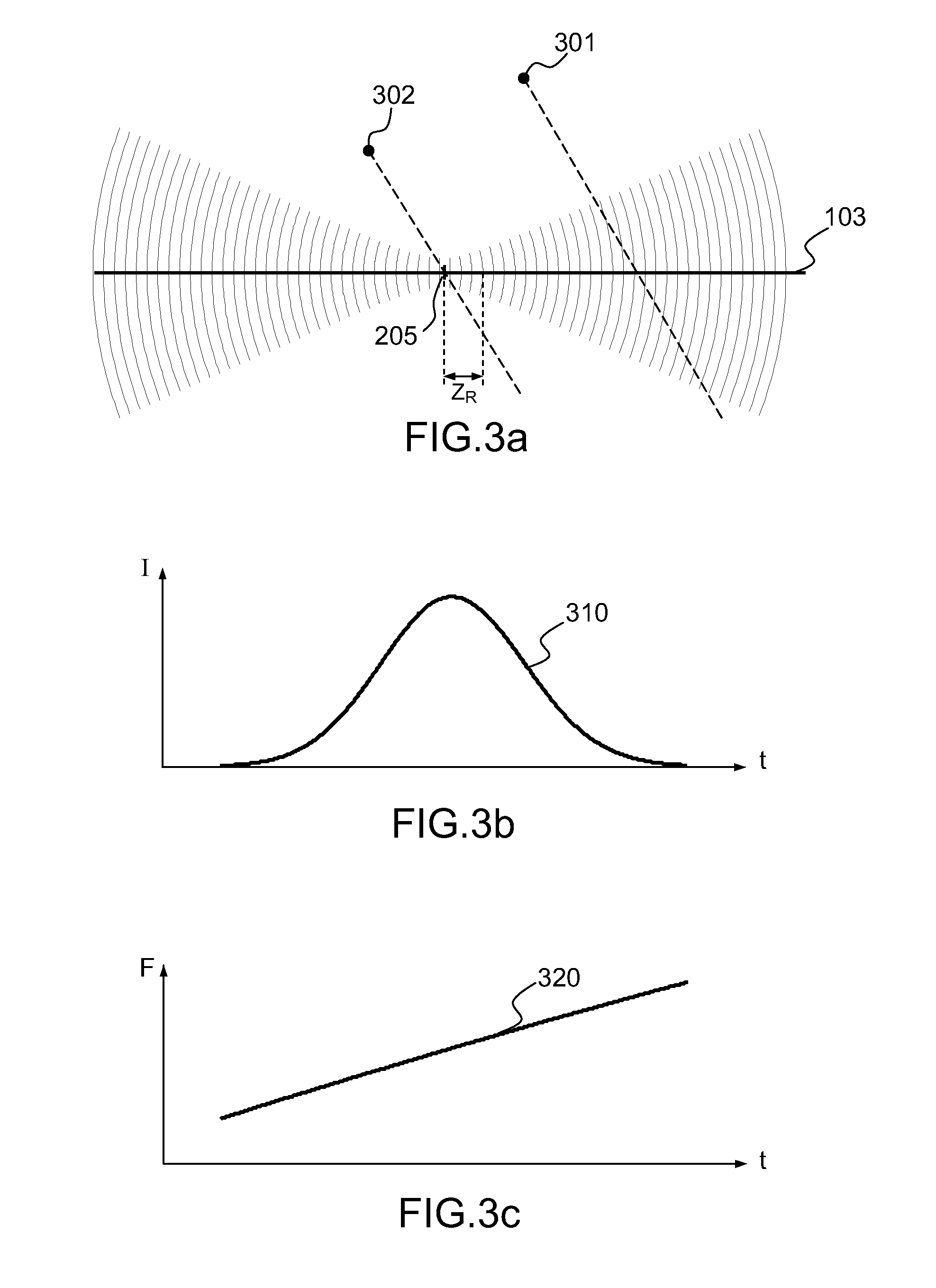Single-Particle LIDAR Anemometry Method and System
a single-particle, lidar anemometry technology, applied in the direction of speed/acceleration/shock measurement, fluid speed measurement, instruments, etc., can solve the problem of heterogeneous gas illuminated by laser beams, and achieve good bijection and reduce power/sensitivity requirements
- Summary
- Abstract
- Description
- Claims
- Application Information
AI Technical Summary
Benefits of technology
Problems solved by technology
Method used
Image
Examples
Embodiment Construction
[0041]With regard to clarity, the same references in the various figures denote the same elements.
[0042]FIG. 1 shows a longitudinal cross section of a LIDAR light beam. In the example, particles of which it is desired to measure the velocity are spheroids having an average diameter of the order of 0.1 μm. These particles have the advantage of moving at substantially the same speed as the gas in which they are suspended, due to their small size.
[0043]The beam envelope 102 is shown in the figure. The focal volume 101 of the beam extends from one side of the beam waist 104 to the other. By way of example, the waist is approximately 50 μm wide and the width L of the beam focal volume 101 along the optical axis 103 is less than 5 mm (Rayleigh zone), which corresponds to a volume 101. The optical axis 103 is directed, for example, so as to make an angle α of 60° with the displacement direction of the particles of which it is desired to measure the velocity. Thus, the velocity vector 110 o...
PUM
 Login to View More
Login to View More Abstract
Description
Claims
Application Information
 Login to View More
Login to View More - R&D
- Intellectual Property
- Life Sciences
- Materials
- Tech Scout
- Unparalleled Data Quality
- Higher Quality Content
- 60% Fewer Hallucinations
Browse by: Latest US Patents, China's latest patents, Technical Efficacy Thesaurus, Application Domain, Technology Topic, Popular Technical Reports.
© 2025 PatSnap. All rights reserved.Legal|Privacy policy|Modern Slavery Act Transparency Statement|Sitemap|About US| Contact US: help@patsnap.com



